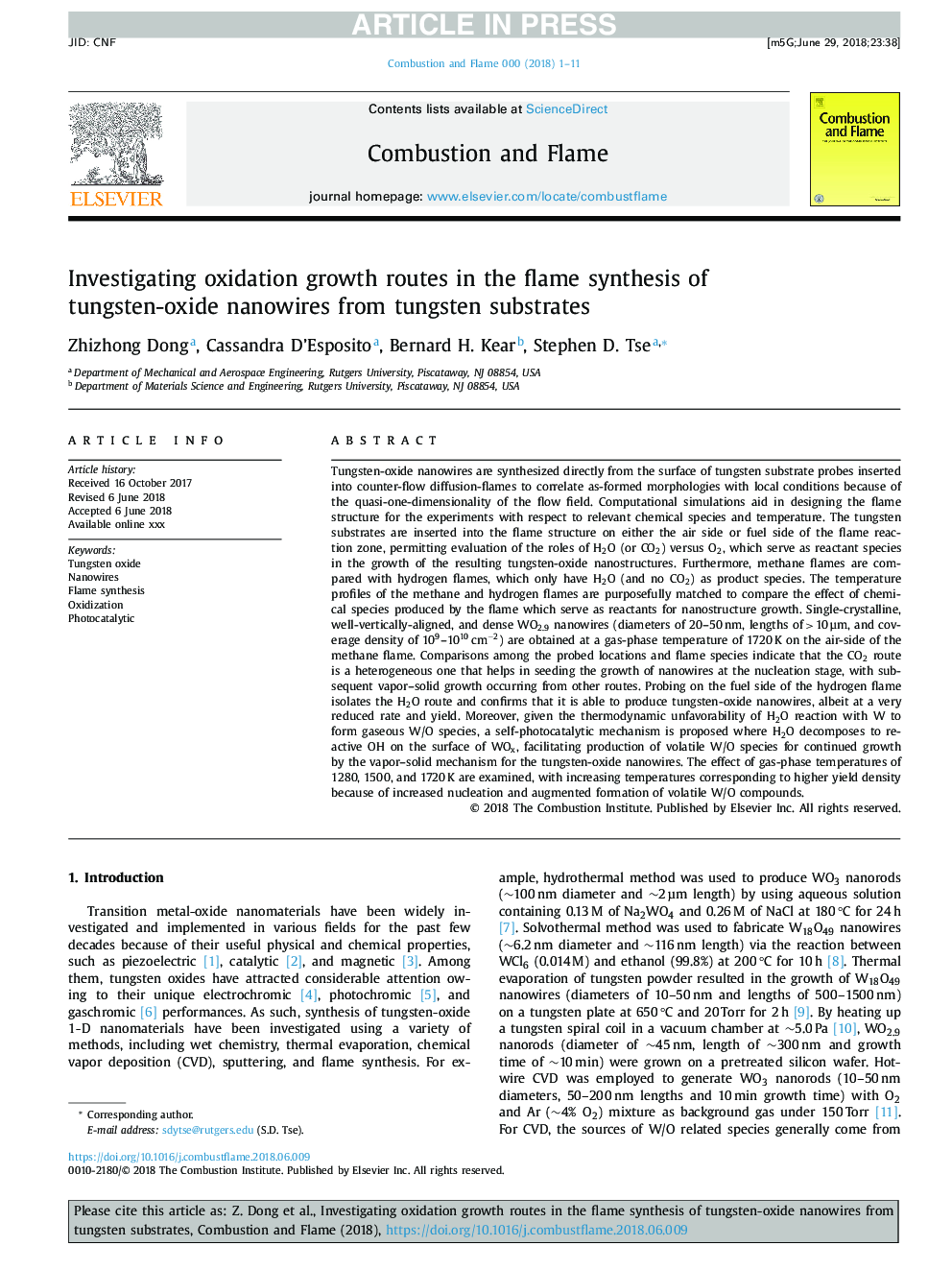| کد مقاله | کد نشریه | سال انتشار | مقاله انگلیسی | نسخه تمام متن |
|---|---|---|---|---|
| 6593439 | 1423542 | 2018 | 11 صفحه PDF | دانلود رایگان |
عنوان انگلیسی مقاله ISI
Investigating oxidation growth routes in the flame synthesis of tungsten-oxide nanowires from tungsten substrates
ترجمه فارسی عنوان
بررسی مسیرهای رشد اکسیداسیون در سنتز شعله نانوسیمهای تنگستن-اکسید از بسترهای تنگستن
دانلود مقاله + سفارش ترجمه
دانلود مقاله ISI انگلیسی
رایگان برای ایرانیان
کلمات کلیدی
موضوعات مرتبط
مهندسی و علوم پایه
مهندسی شیمی
مهندسی شیمی (عمومی)
چکیده انگلیسی
Tungsten-oxide nanowires are synthesized directly from the surface of tungsten substrate probes inserted into counter-flow diffusion-flames to correlate as-formed morphologies with local conditions because of the quasi-one-dimensionality of the flow field. Computational simulations aid in designing the flame structure for the experiments with respect to relevant chemical species and temperature. The tungsten substrates are inserted into the flame structure on either the air side or fuel side of the flame reaction zone, permitting evaluation of the roles of H2O (or CO2) versus O2, which serve as reactant species in the growth of the resulting tungsten-oxide nanostructures. Furthermore, methane flames are compared with hydrogen flames, which only have H2O (and no CO2) as product species. The temperature profiles of the methane and hydrogen flames are purposefully matched to compare the effect of chemical species produced by the flame which serve as reactants for nanostructure growth. Single-crystalline, well-vertically-aligned, and dense WO2.9 nanowires (diameters of 20-50â¯nm, lengths ofâ¯>â¯10â¯Âµm, and coverage density of 109-1010â¯cmâ2) are obtained at a gas-phase temperature of 1720â¯K on the air-side of the methane flame. Comparisons among the probed locations and flame species indicate that the CO2 route is a heterogeneous one that helps in seeding the growth of nanowires at the nucleation stage, with subsequent vapor-solid growth occurring from other routes. Probing on the fuel side of the hydrogen flame isolates the H2O route and confirms that it is able to produce tungsten-oxide nanowires, albeit at a very reduced rate and yield. Moreover, given the thermodynamic unfavorability of H2O reaction with W to form gaseous W/O species, a self-photocatalytic mechanism is proposed where H2O decomposes to reactive OH on the surface of WOx, facilitating production of volatile W/O species for continued growth by the vapor-solid mechanism for the tungsten-oxide nanowires. The effect of gas-phase temperatures of 1280, 1500, and 1720â¯K are examined, with increasing temperatures corresponding to higher yield density because of increased nucleation and augmented formation of volatile W/O compounds.
ناشر
Database: Elsevier - ScienceDirect (ساینس دایرکت)
Journal: Combustion and Flame - Volume 195, September 2018, Pages 311-321
Journal: Combustion and Flame - Volume 195, September 2018, Pages 311-321
نویسندگان
Dong Zhizhong, Cassandra D'Esposito, Bernard H. Kear, Stephen D. Tse,
